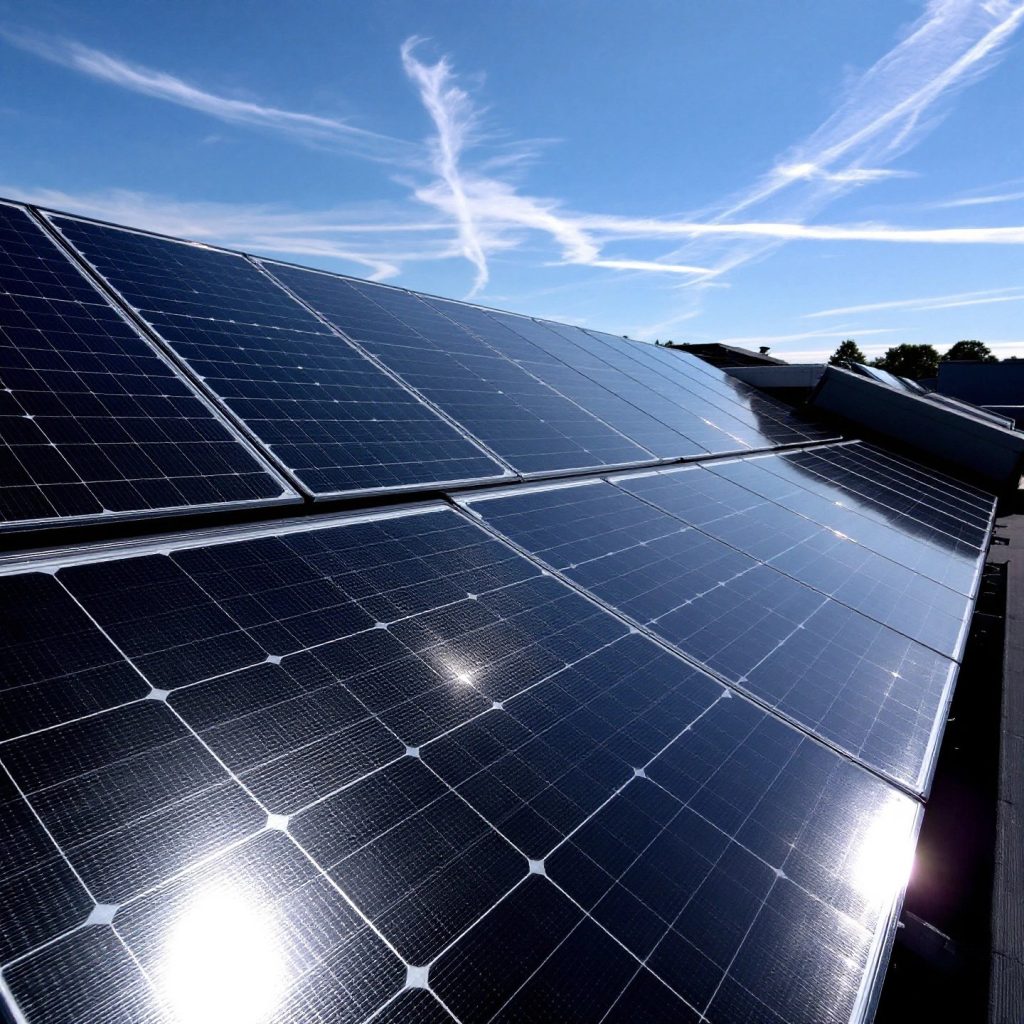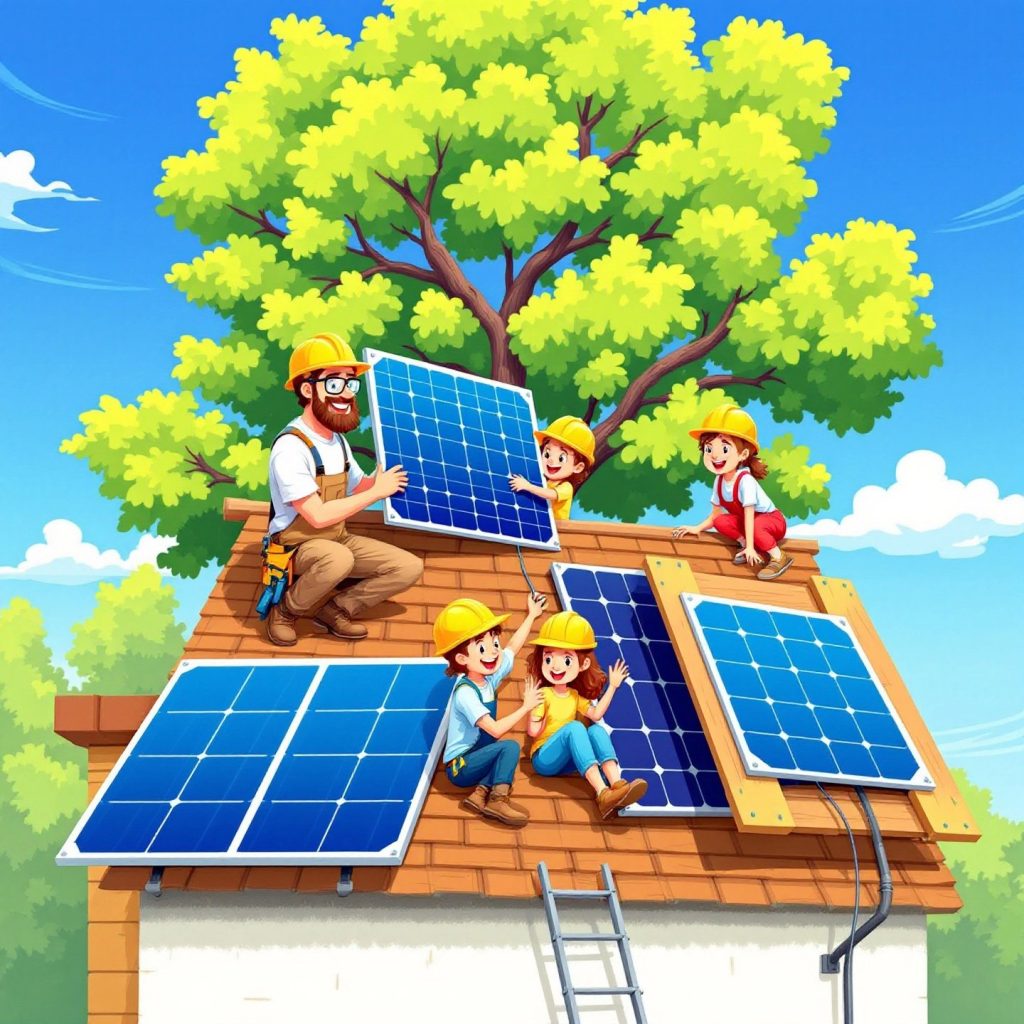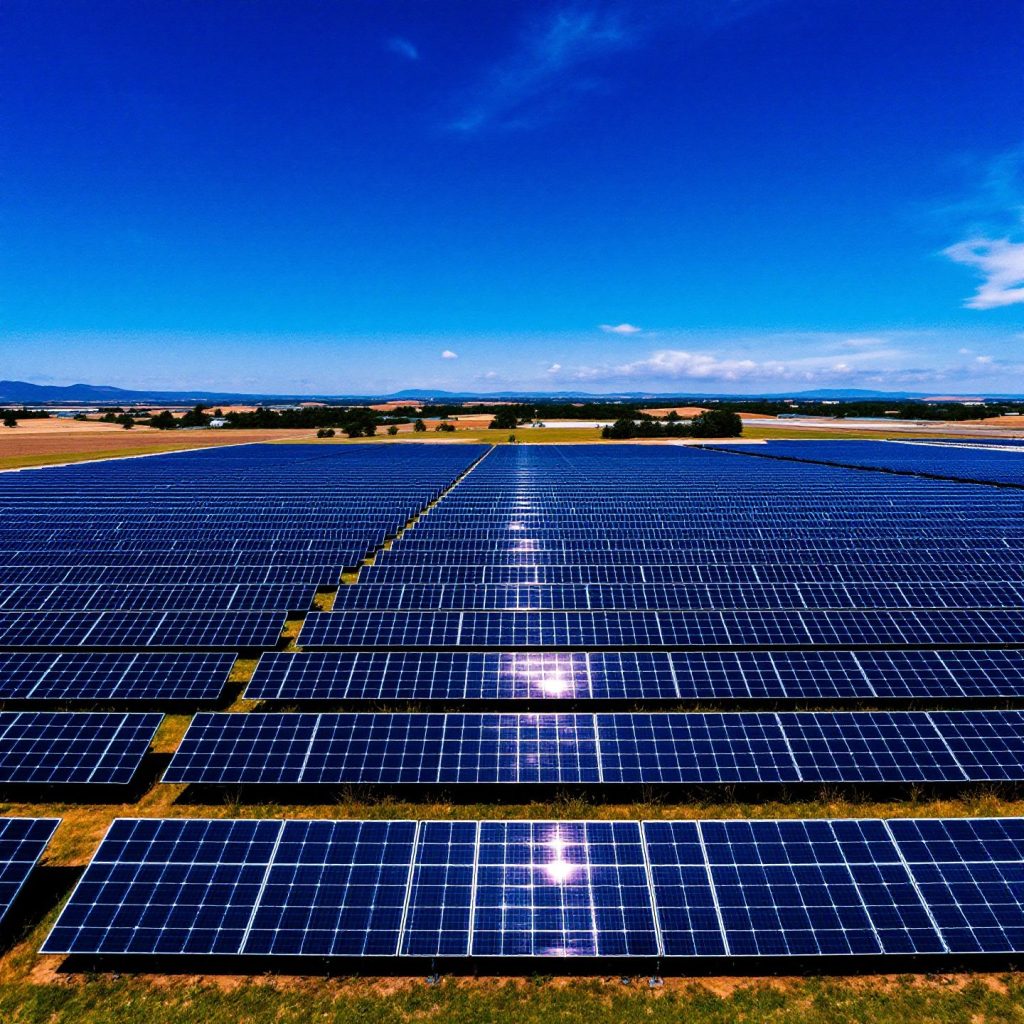Introduction to How to Clean Solar Panels
Imagine investing in solar panels to harness the sun’s abundant energy and reduce your electricity bills. Sounds like a smart move, right? But what if I told you that neglecting a simple maintenance task could compromise this investment? That’s where the importance of learning how to clean solar panels comes into play. Regular solar panel maintenance is crucial for ensuring that your panels operate at peak efficiency, maximizing your energy savings and extending the lifespan of your system.
Many homeowners assume that rain will naturally clean their panels, but this is a common misconception. While rain can remove some surface dust, it often isn’t enough to clear away stubborn grime, bird droppings, or other debris that can accumulate over time, reducing the panels’ ability to absorb sunlight effectively. Regular cleaning, therefore, becomes essential to maintain optimal performance and prevent energy output loss.
In this article, you’ll discover practical methods for cleaning solar panels safely and effectively. We’ll explore the tools and techniques needed for both ground-level and roof-mounted systems, and discuss the merits of professional versus DIY cleaning. By the end, you’ll understand the long-term gains of regular maintenance, including improved efficiency, increased energy savings, and the protection of your solar investment. So let’s dive in and ensure your solar panels are always ready to soak up the sun!
Why Clean Solar Panels Regularly
Solar panels are a fantastic investment for harnessing renewable energy, but to ensure they deliver optimal performance, regular cleaning is essential. Many people believe that rain naturally cleans solar panels, but this is a common misconception. While rain can wash away loose dirt and dust, it often fails to remove more stubborn residues like bird droppings, pollen, and industrial pollutants that can significantly impact energy production.
Understanding how often to clean solar panels is crucial for maintaining their efficiency. The frequency of cleaning largely depends on several factors, including your local environment and weather conditions. For instance, if you reside in a dusty area or near industrial sites, your panels might require cleaning every three to four months to prevent grime buildup. Similarly, in coastal areas, salt spray can accumulate, necessitating more frequent maintenance.
Factors Influencing Cleaning Frequency
- Location: Panels located in dusty or pollen-heavy areas may need cleaning every few months.
- Weather: Regions with regular rainfall might require less frequent cleaning, but it’s still wise to inspect for stubborn debris.
- Panel Tilt: Panels with a low tilt may accumulate more dirt and debris, requiring more frequent attention.
- Environmental Factors: Industrial pollution and bird droppings can create significant barriers to sunlight, affecting energy output.
By addressing these factors and establishing a regular solar panel cleaning frequency, you can maximize your panels’ energy output. Regular inspection and cleaning not only enhance efficiency but also extend the lifespan of your solar investment. Remember, a proactive approach to maintenance can prevent minor issues from escalating into major problems, ensuring your panels consistently deliver the energy savings you expect.

Essential Tools and Safety Precautions for Cleaning Solar Panels
When it comes to maintaining the efficiency of your solar panels, having the right tools and following essential safety precautions are paramount. Imagine trying to clean your panels without the right equipment—sounds daunting, doesn’t it? Fortunately, with the appropriate solar panel cleaning tools, the task becomes not only manageable but also safe and effective.
Must-Have Cleaning Tools
- Soft-Bristled Brushes: These are crucial for gently removing dirt and grime without scratching the panel surface. Opt for long-handled versions to reach all areas safely from the ground.
- Mild Soap or Non-Abrasive Cleaners: Use eco-friendly solutions that won’t leave residue or damage the panels. Avoid harsh chemicals that can harm the environment and the panels.
- Squeegees: Ideal for removing excess water post-cleaning, squeegees help in preventing water spots that can block sunlight.
- Extension Poles: These allow you to clean without climbing onto the roof, thus minimizing the risk of falls.
- Hose with Spray Nozzle: A gentle spray can effectively rinse away soap and dirt without damaging the panels.
Safety Tips for Cleaning Solar Panels
Safety should always be your top priority when cleaning solar panels. Before starting, ensure the solar panel system is turned off to prevent electrical hazards. If your panels are roof-mounted, consider using a sturdy ladder and wearing rubber-soled shoes for better grip. A safety harness is advisable if you must climb onto the roof.
Here are some additional safety tips for cleaning solar panels:
- Always clean on a cool, overcast day to avoid thermal shock from sudden temperature changes.
- Avoid using high-pressure washers, as they can damage the panels.
- Never walk on the panels, as this can crack the glass or damage the cells.
- If possible, work with a partner to ensure someone is available to help in case of an emergency.
By equipping yourself with the right tools and adhering to these safety guidelines, you’ll not only protect yourself but also ensure your solar panels remain in top condition. Now that you’re familiar with the essentials, let’s delve into specific techniques for cleaning ground-level solar panels in the next section.
Effective Techniques for Ground-Level Panels
When it comes to ground-level solar panel cleaning, a systematic approach ensures thoroughness and safety. Imagine you’re standing in your backyard, ready to make your solar panels sparkle. Here’s a step-by-step guide to help you achieve just that:
Step-by-Step Cleaning Guide
- Turn Off the System: Before you begin, ensure your solar panel system is turned off. This is crucial for safety, preventing any chance of electrical shock.
- Gather Your Tools: You’ll need a soft-bristled brush, mild soap or a soap-free cleaner, a hose with a spray nozzle, and a squeegee. Renewable Energy Nexus offers high-quality cleaning accessories that are perfect for the job. Check out their selection for reliable options.
- Initial Rinse: Use the hose to gently spray water over the panels, removing loose dirt and debris. Ensure the water pressure is low to avoid damaging the panels.
- Apply Cleaner: Mix a small amount of mild, biodegradable soap with water. Use the soft-bristled brush to apply the solution, gently scrubbing the surface to remove grime and bird droppings.
- Rinse Thoroughly: After scrubbing, rinse the panels again with the hose to wash away any soap residue.
- Dry the Panels: Use a squeegee to remove excess water, preventing water spots that can reduce efficiency.
Importance of Gentle Techniques
Using gentle techniques is vital to avoid scratching or damaging the panels. Harsh scrubbing or abrasive materials can lead to micro-scratches that diminish the panels’ ability to capture sunlight effectively. By following these solar panel cleaning steps, you ensure that your panels remain in optimal condition, maximizing energy output.
Incorporating these methods into your regular maintenance routine will help protect your investment and ensure your solar panels continue to perform efficiently. As we move on, we’ll explore the different approaches needed for cleaning roof-mounted systems, where safety becomes even more critical.
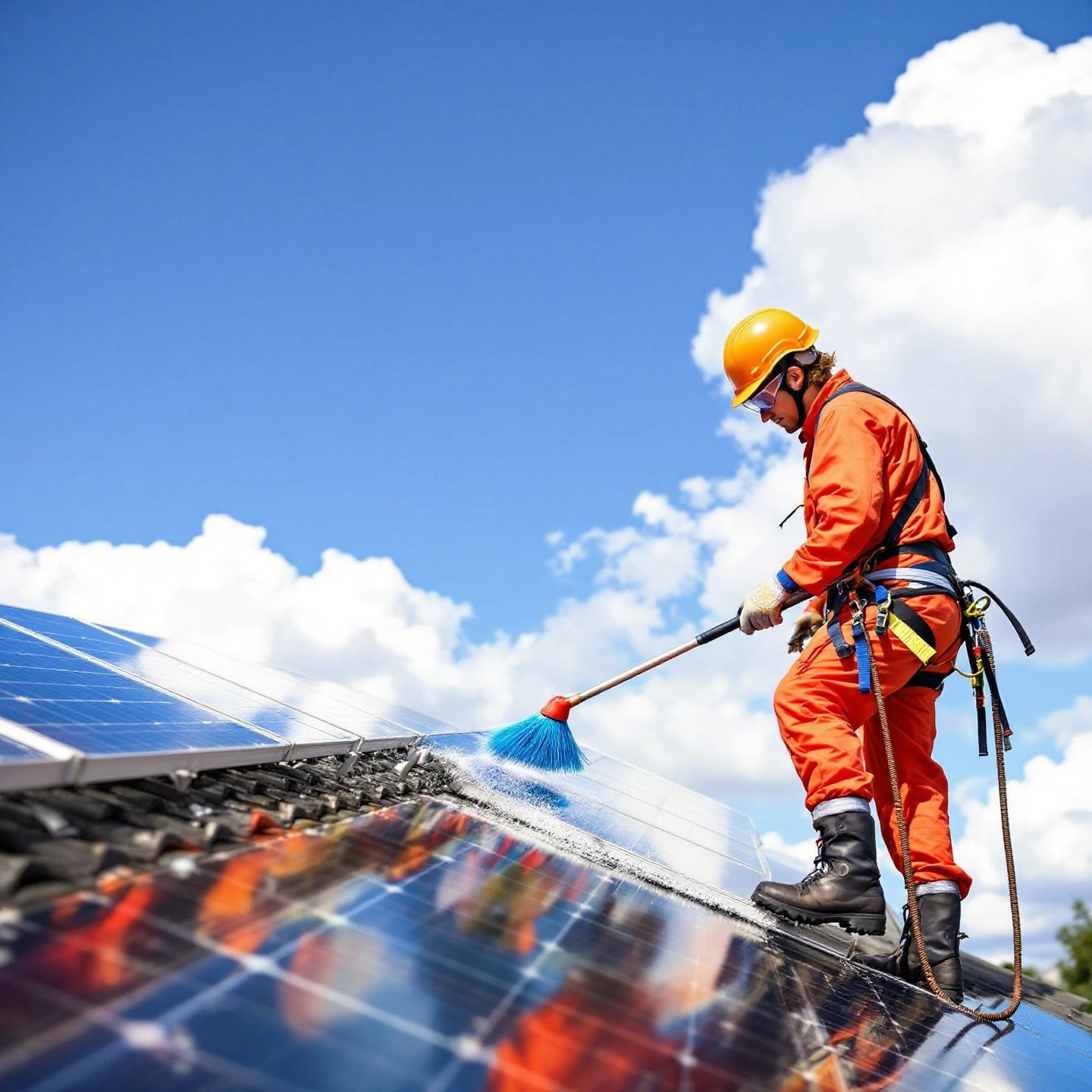
Approaches for Roof-Mounted Systems
Cleaning roof-mounted solar panels might seem daunting, but with the right approach, it can be done safely and effectively. Imagine standing at the base of your home, looking up at the panels that power your life. How do you ensure they’re as clean as possible without compromising your safety?
Safety First: Essential Precautions
Before you begin roof solar panel cleaning, prioritize safety. Start by turning off the solar panel system to eliminate any electrical risks. Ensure you have a sturdy ladder, and if possible, work with a partner who can hold the ladder steady. Wearing rubber-soled shoes will provide better grip, reducing the risk of slipping.
Consider using a safety harness if you must step onto the roof. This is crucial, especially if your roof is steep or slippery. Remember, solar panel cleaning safety is paramount. If at any point you feel unsafe, it’s better to stop and reassess your approach.
Using Extension Tools
To clean roof-mounted panels without climbing onto the roof, extension tools are your best friends. Here’s how you can use them effectively:
- Extension Poles: Attach a soft brush or a squeegee to an extension pole. This allows you to reach the panels from the safety of a ladder or even from the ground, depending on your roof’s height.
- Hose with Spray Nozzle: Use a hose with a spray nozzle attached to an extension pole. This setup helps you rinse the panels gently without applying too much pressure, which could damage them.
These tools not only make the cleaning process safer but also more efficient, ensuring you don’t miss any spots.
When to Consider Professional Services
Sometimes, the best option is to leave the job to the professionals, especially if:
- You are uncomfortable with heights or lack the necessary safety equipment.
- Your roof is particularly steep or difficult to navigate.
- There is significant buildup that requires specialized cleaning solutions or techniques.
Professional services can save you time and ensure your panels are cleaned thoroughly without the risk of damage or personal injury. They typically have the right equipment and expertise to handle various roof types and panel conditions.
By considering these approaches, you can maintain your roof-mounted solar panels effectively. Next, we’ll explore automated solutions that can further simplify the cleaning process, ensuring your panels remain efficient with minimal effort.
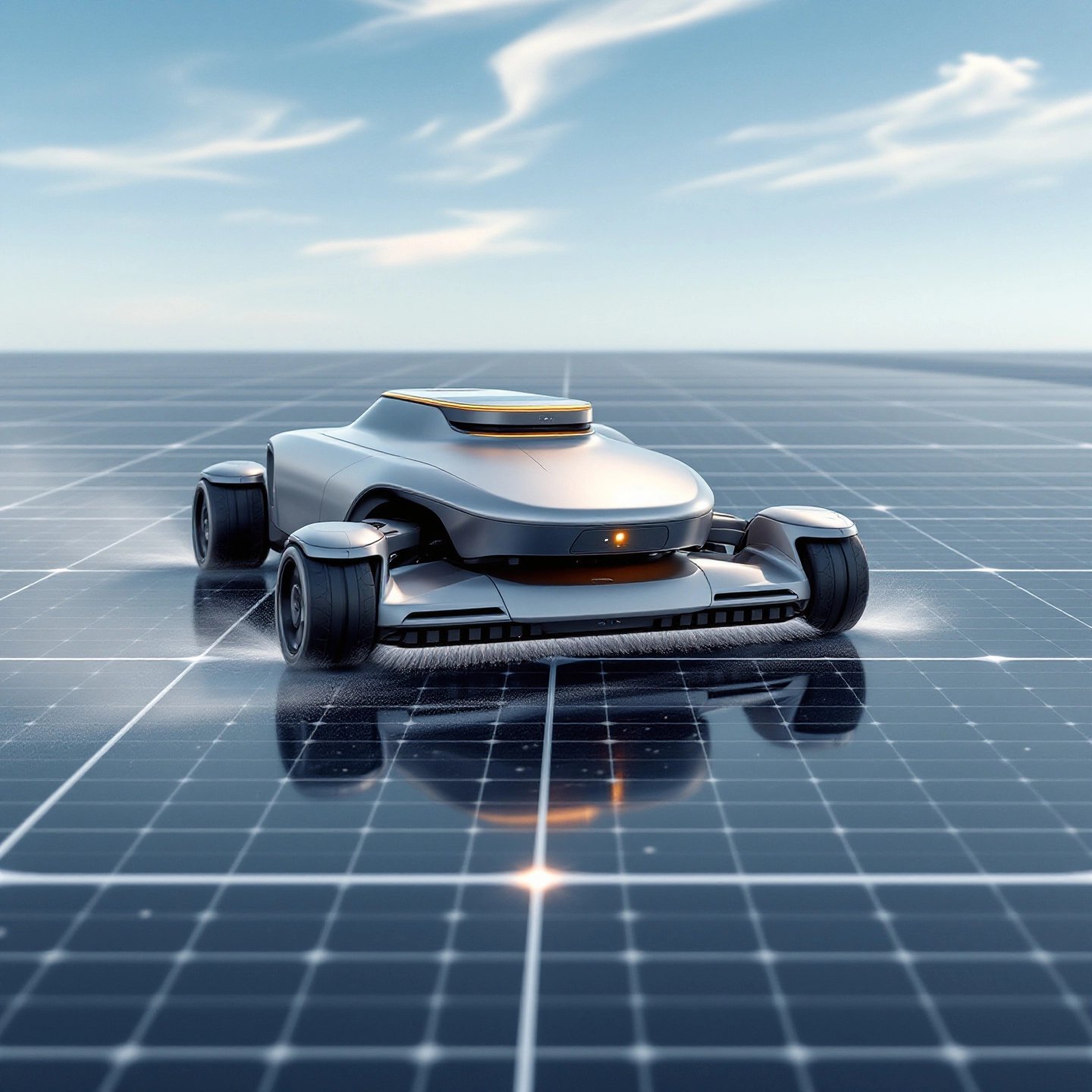
Automated and Remote Cleaning Solutions
Imagine a world where your solar panels remain pristine without any manual effort. Sounds like a dream, right? With automated solar panel cleaning systems, this is not only possible but also highly effective. These systems, such as robotic cleaners and sprinkler setups, offer a hands-free solution to maintaining optimal panel efficiency.
Automated Cleaning Systems
One of the most advanced solutions available is the robotic cleaner. These devices move across the surface of the panels, using soft brushes and water to remove dust and grime. Think of it like a Roomba for your solar panels. They are particularly beneficial for large installations where manual cleaning would be labor-intensive and time-consuming. Robotic cleaners ensure consistent maintenance, maximizing energy output by keeping panels clear of debris.
Another popular option is the sprinkler system, which operates similarly to a garden irrigation setup. These systems periodically spray water over the panels, washing away dirt and preventing buildup. While less precise than robotic cleaners, sprinkler systems are cost-effective and easy to install, making them ideal for residential setups.
Cost-Effectiveness and Efficiency
The initial investment in automated cleaning systems can be offset by the increased energy production they facilitate. By preventing dirt accumulation, these systems help solar panels operate at peak efficiency, potentially increasing energy output by up to 30%, as noted by RST CleanTech. Over time, this can lead to substantial savings on energy bills, making the upfront cost worthwhile.
Benefits of Remote Monitoring
Coupling automated cleaning with remote monitoring systems enhances the efficiency of solar maintenance. Remote monitoring allows you to track your system’s performance in real-time from anywhere with an internet connection. This technology provides insights into energy output, system health, and potential issues, allowing for proactive maintenance.
Remote monitoring systems, as highlighted by EnergyAid, can alert you to any dips in performance, enabling quick intervention before small issues become major problems. This not only preserves the efficiency of your solar panels but also extends their lifespan, ensuring a better return on investment.
By integrating automated cleaning and remote monitoring, you can keep your solar panels in top condition with minimal effort. This combination of technology not only enhances energy production but also provides peace of mind, knowing that your solar investment is being maximized efficiently. As we continue, let’s explore how to handle specific challenges like snow and cold conditions to further optimize your solar panel performance.
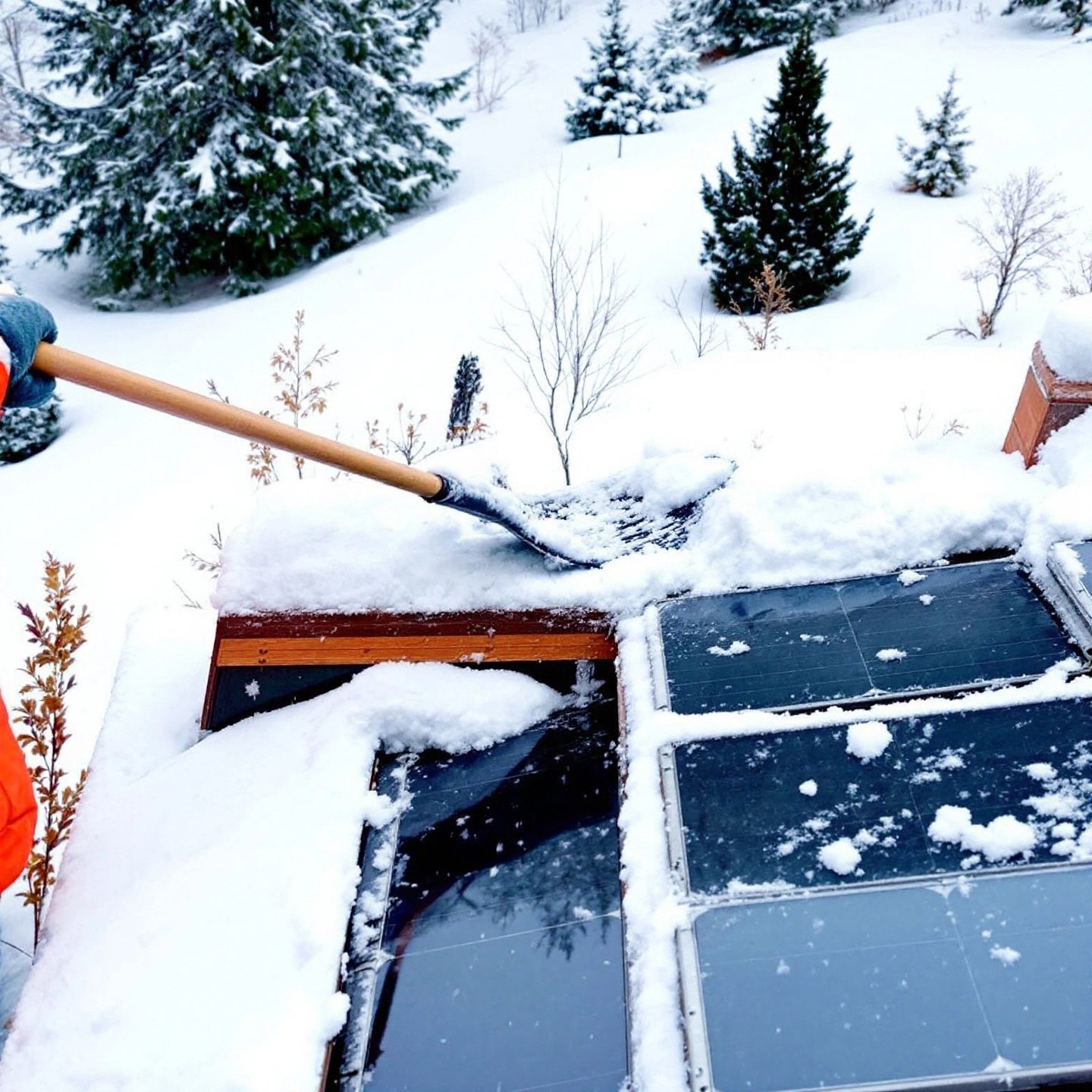
Handling Snow and Cold Conditions
Winter can pose significant challenges to maintaining solar panel efficiency, especially in regions prone to heavy snowfall. Imagine waking up to a thick blanket of snow covering your solar panels, blocking precious sunlight. How do you ensure your panels continue to generate energy effectively? Let’s explore practical strategies for solar panel snow removal and maintaining efficiency during cold months.
Effective Snow Removal Techniques
Removing snow from solar panels is crucial to prevent energy loss and potential damage. Here are some recommended methods:
- Roof Rake: Use a roof rake with a long telescopic handle to gently pull snow off the panels from the ground. This minimizes the risk of damage and keeps you safe from climbing onto slippery roofs.
- Soft-Bristled Broom: A broom with soft bristles can be used to sweep away snow without scratching the panel surface. Ensure the broom has a telescopic handle for reaching higher areas.
- Leaf Blower: For light, fluffy snow, a leaf blower on a low setting can effectively clear the panels without physical contact.
- Warm Water Application: In mild conditions, spraying warm (not hot) water can help melt snow. Be cautious of thermal shock and ensure water does not freeze on the panels.
Preventive Measures for Snow Accumulation
To minimize snow buildup, consider these preventive strategies:
- Adjust Panel Angle: Panels mounted at a steeper angle naturally shed snow more efficiently due to gravity.
- Trimming Overhanging Branches: Keep the area above your panels clear of branches to reduce additional snow deposits.
- Heating Systems: Installing heating elements can prevent snow accumulation by melting it upon contact, ensuring continuous energy production.
By implementing these winter solar panel maintenance techniques, you can maintain optimal performance even in snowy conditions. Remember, safety is paramount—always prioritize your well-being and consult professionals if needed. As we continue, we’ll delve into maintaining smaller solar installations, ensuring every part of your solar system operates at its best.
Maintaining Solar Lights and Smaller Installations
Imagine your garden aglow with the soft, sustainable light of solar garden fixtures. These smaller solar installations, like garden lights, are not only eco-friendly but also add a charming touch to your outdoor space. However, to keep them shining bright, regular maintenance is essential. Sounds complex? It doesn’t have to be. Let’s explore simple tips for cleaning solar garden lights and ensuring their longevity.
Steps for Cleaning Solar Garden Lights
- Initial Inspection: Start by inspecting your solar lights for dirt, grime, or any signs of wear. This helps you identify areas that need attention.
- Gentle Cleaning: Use a damp cloth and mild dish soap to wipe down the panels and bulbs. Avoid harsh chemicals that could damage the surface. For stubborn grime, a soft-bristled toothbrush can help without scratching the panels.
- Clear Coating: To restore clarity to cloudy panels, apply a clear-coat spray. This not only enhances the panels’ appearance but also protects them from future clouding.
- Battery Maintenance: Check the batteries, as corrosion can hinder performance. If necessary, clean corroded areas with a mixture of vinegar and water using a toothbrush, then replace with rechargeable solar batteries for better efficiency.
Preventive Maintenance Tips
Regular maintenance goes beyond cleaning. Here are some small solar panel maintenance tips to ensure your lights operate efficiently:
- Placement: Ensure your solar lights are positioned in areas with maximum sunlight exposure. Avoid placing them under trees or shaded spots.
- Regular Cleaning Schedule: Establish a routine cleaning schedule, ideally every 2-3 months, to prevent dirt buildup.
- Weather Protection: During extreme weather conditions, consider temporarily storing your lights to prevent damage.
If you’re considering upgrades or replacements for your solar installations, Renewable Energy Nexus offers a range of compact solar solutions. Their products are designed to enhance your garden’s aesthetic while ensuring efficient energy use. By following these maintenance tips, your solar lights will continue to illuminate your garden beautifully, contributing to an eco-friendly environment.
Determining Costs and Cleaning Schedules for Solar Panels
When it comes to maintaining your solar panels, one of the first questions that might pop into your mind is about the cost. Solar panel cleaning cost can vary significantly, and understanding this variance can help you make informed decisions about your maintenance strategy.
Professional Cleaning vs. DIY Methods
Professional cleaning services typically charge between $10 to $20 per panel, or around $150 to $500 for an entire system, with most homeowners spending about $325. The cost depends on factors such as the number of panels, their condition, and the complexity of the cleaning task. For instance, panels with heavy grime or those installed at steep angles may incur higher costs due to the additional labor and safety measures required. On the other hand, DIY solar panel cleaning can be a cost-effective alternative, primarily involving the purchase of basic cleaning tools like soft brushes, mild soap, and extension poles.
While DIY cleaning can save money upfront, it requires time and effort, and there’s a risk of damaging the panels if not done correctly. Professional services, however, offer peace of mind with their expertise and equipment, ensuring thorough cleaning without risking panel damage.
Setting a Cleaning Schedule
How often should you clean your solar panels? The answer depends on several factors, including your location, climate, and system size. In general, it’s advisable to clean solar panels at least twice a year. However, if you live in a dusty area or near industrial zones, more frequent cleaning might be necessary to maintain efficiency.
Consider setting up a regular cleaning schedule based on your system’s energy output. Monitoring your panels’ performance can provide insights into when cleaning is needed. A noticeable drop in efficiency might indicate that the panels are dirty and require attention. Additionally, seasonal changes can also dictate cleaning frequency. For example, pollen in spring or leaves in autumn might necessitate more frequent maintenance.
By weighing the pros and cons of professional versus DIY cleaning and establishing a strategic cleaning schedule, you can ensure your solar panels remain efficient and continue to save you money on energy bills. As we move forward, let’s delve into the conclusion, where we’ll summarize the importance of regular maintenance and provide final tips for keeping your solar panels in top shape.
Conclusion
As you reflect on the journey of maintaining your solar panels, it becomes clear that regular upkeep is not just a recommendation but a necessity for ensuring optimal performance and longevity. Solar panels are a significant investment, and like any valuable asset, they require attention and care to function at their best. By following the solar panel maintenance tips outlined in this guide, you can significantly enhance their efficiency and extend their lifespan.
Imagine the satisfaction of knowing your solar panels are consistently operating at peak efficiency, providing clean, renewable energy while reducing your electricity bills. This level of performance is achievable through simple yet effective maintenance routines, such as regular cleaning, monitoring for debris, and addressing specific environmental challenges like snow or shade.
Moreover, embracing proactive strategies for solar efficiency improvement—from automated cleaning systems to strategic placement and orientation—can further boost your panels’ output. These actions not only safeguard your investment but also contribute to a more sustainable future by maximizing the energy harnessed from the sun.
Now that you’re equipped with the knowledge and tools to maintain your solar panels, it’s time to put this guidance into practice. Regular maintenance will ensure your solar panels continue to deliver the energy savings and environmental benefits you expect. For those seeking further resources or professional assistance, don’t hesitate to explore reputable solar service providers who can offer additional support and expertise.
By maintaining your solar panels diligently, you’re not just preserving their efficiency—you’re actively participating in a cleaner, greener energy future. Let this commitment to solar maintenance be your contribution to a more sustainable world.
Frequently Asked Questions
1. Can I use Dawn dish soap to clean my solar panels?
While mild dish soap can be used, it’s best to opt for a non-abrasive cleaner. Ensure thorough rinsing to prevent residue that might affect panel efficiency.
2. How often should solar panels be cleaned?
Cleaning frequency depends on location and environmental factors. Generally, panels should be cleaned every 6 months, but more often in dusty or polluted areas.
3. What tools are essential for cleaning solar panels?
Key tools include soft-bristled brushes, mild soap, squeegees, and extension poles. These ensure gentle cleaning without damaging the panels.
4. Is professional solar panel cleaning worth it?
Professional cleaning ensures thorough maintenance without risk of damage, especially for roof-mounted systems. It can be costlier but offers peace of mind.
5. What are the benefits of automated solar panel cleaning systems?
Automated systems like robotic cleaners and sprinklers provide consistent maintenance, enhancing energy output and reducing manual effort.

